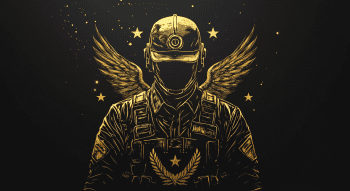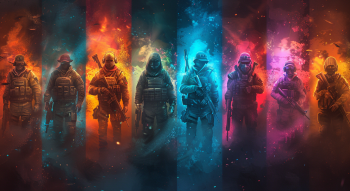How to See Damage Dealt in CS2?

Tracking the CS2 damage dealt is crucial for leveling up your gameplay, understanding what moves pack the most punch against your opponents, pinpointing where you’re winning or stumbling, and improving your shot accuracy. However, if you're hitting a wall because CS2 doesn't show damage in certain situations, this guide has got your back and will teach you how to see damage done in CS2 effectively. We'll also address scenarios where CS2 damage dealt not showing becomes an issue and highlight alternative tools and techniques to help you sharpen your skills and step up your game.
Check In-Game HUD
The most straightforward and reliable way to track the damage you’ve dealt in CS2 is through the HUD. In general, CS2 HUD commands contain much more extensive settings, but for now, we’re zoning in on the damage stats. At the end of each round, you’ll notice numbers popping up under other players’ profile pictures at the top of the screen. The green number shows your damage you’ve dished out, while the black reveals how much damage you’ve taken.

Of course, these numbers aren’t displayed live for all players in competitive matchmaking, as it would interfere with the flow of the game. Along with damage, you’ll also see icons showing you how many hits you’ve landed on your opponents or how many times you’ve been hit. This valuable data gives players a big edge—especially the more seasoned ones—helping them get the drop on you if you’re not paying attention.
Check the Scoreboard During the Game
If you want to track your total damage during the game, it’s a quick fix. To do it, just hit Tab to pull up the scoreboard and glance in the top-right corner. If you're curious about how to see CS2 damage given during real-time gameplay, private servers with customized settings are your best bet for keeping tabs on those stats while you play.

Check the Final Match Stats
After the match wraps up, a detailed pop-up window will show up with the game’s stats, including ADR (Average Damage per Round)—arguably one of the most important performance indicators in CS2. No surprise, it’s usually the biggest number in the pop-up.

You can also hit Tab here to check out the total damage every player dished out over the course of the match. You’ll find the DMG section on the top-left corner of the scoreboard.

If you’re chasing even more detailed data, third-party tracking tools like Leetify and FACEIT that are considered one of the best CS2 trackers can give you extra insights that go beyond the in-game stats.
Check Demos
Replays are another excellent way to break down damage dealt in CS2. By watching demos, you can track exactly how much damage each player caused throughout the match. This feature works for both matchmaking and FACEIT games, allowing you to get a better look at your own performance or study others' gameplay. If you're struggling to figure out why CS2 damage isn’t showing in-game, checking a demo might shed light on the issue. Once you get the hang of CS2 replay commands, you can easily follow any player throughout the match to see exactly how the action unfolded.
Use Third-Party Tools and Websites
Leetify
Leetify offers an intuitive platform to track the damage you’ve dealt in CS2. After linking your Steam account, you can dive into detailed match stats, including a breakdown of your damage dealt per round. This platform presents this data in easy-to-read charts, making it a great choice for both casual players looking to improve and experienced analysts digging deep into stats.

How to set it up? Follow these steps:
First, head to the Leetify website and click “Sign Up.”

Next, select “Sign up with Steam.”

Then, enter your credentials and confirm login through a notification sent to your mobile app.


Once logged in, navigate to your profile or anyone else’s. For your own profile, click the Matches tab on the left. For someone else’s, scroll down a bit until you see Match History.

Choose any match you want to analyze.

You’ll be greeted with a neat chart showing every player’s damage dealt during each round.

FACEIT
FACEIT goes the extra mile when it comes to the question of how to see damage dealt in CS2. Players can check it during games through end-round HUD stats.

Additionally, FACEIT allows you to check ADR and other damage stats directly in the match history—without even needing to load up CS2. Keep in mind that only recent matches will show this data—older games might not display ADR, which might leave you scratching your head when you wonder why CS2 can’t see damage dealt to match history. For instance, the game from this screenshot was played about a month ago, yet no ADR numbers are displayed yet.

Don’t Use Console Commands
If you're a transitioning player wondering why CS2 doesn’t show damage dealt in console, here’s the scoop: the sv_damage_print_enable command from CS:GO is no longer functional, even with cheats enabled. Therefore, instead of wasting time on this outdated method of checking CS2 damage dealt in console, focus on the methods we’ve outlined here to effectively track your damage in CS2. Trust us, you’ll be much better off.
That’s it! Now that you know how to track the damage you’ve dealt in CS2—whether you’re diving into replays, checking the scoreboard mid-game, or using third-party tools—put these options to work and fine-tune your performance. Whether you’re a newbie learning the ropes, a FACEIT beast landing 25 kills per game, or a seasoned coach guiding a team to victory, use these tools wisely to get a handle on your damage stats. After all, with great knowledge comes greater control!




















